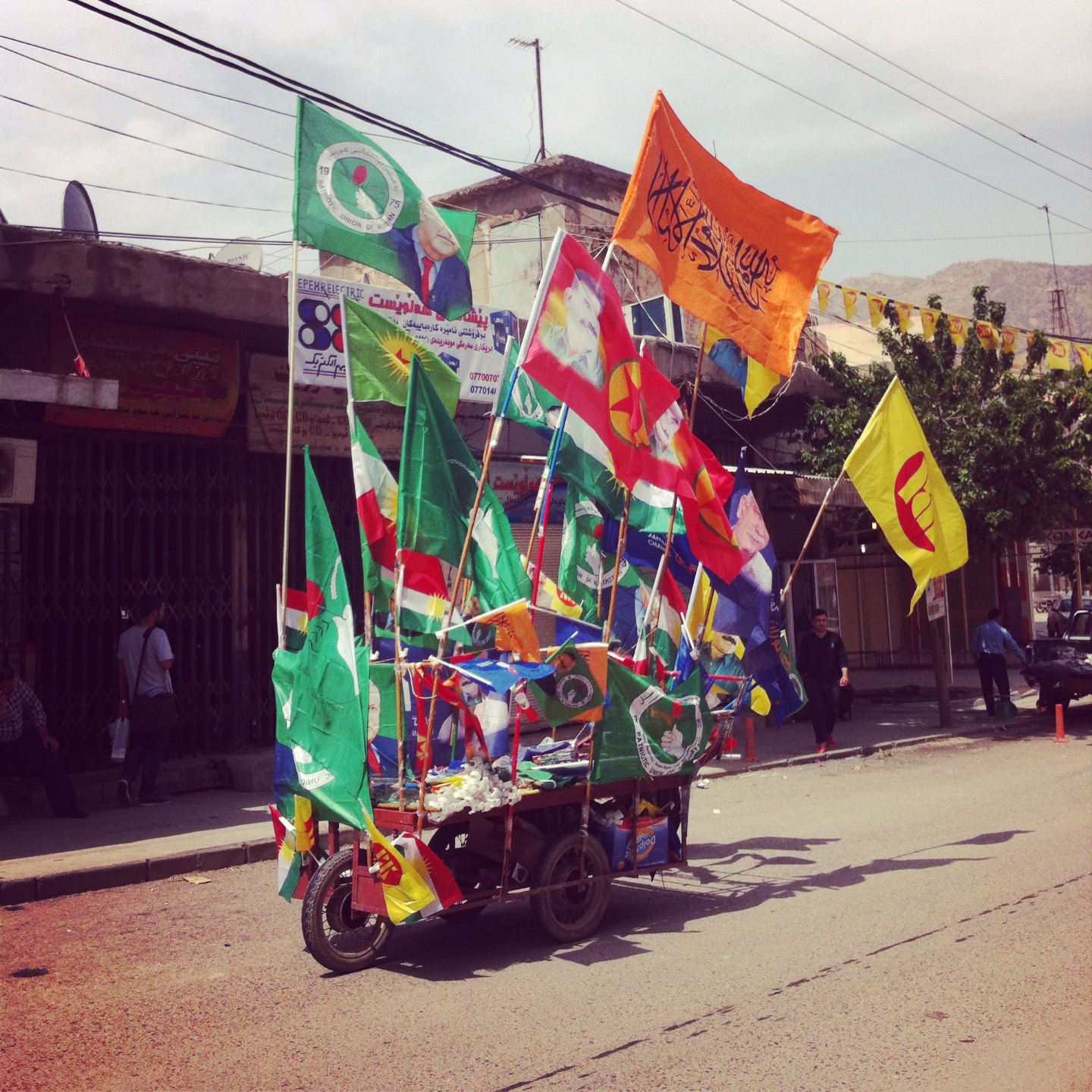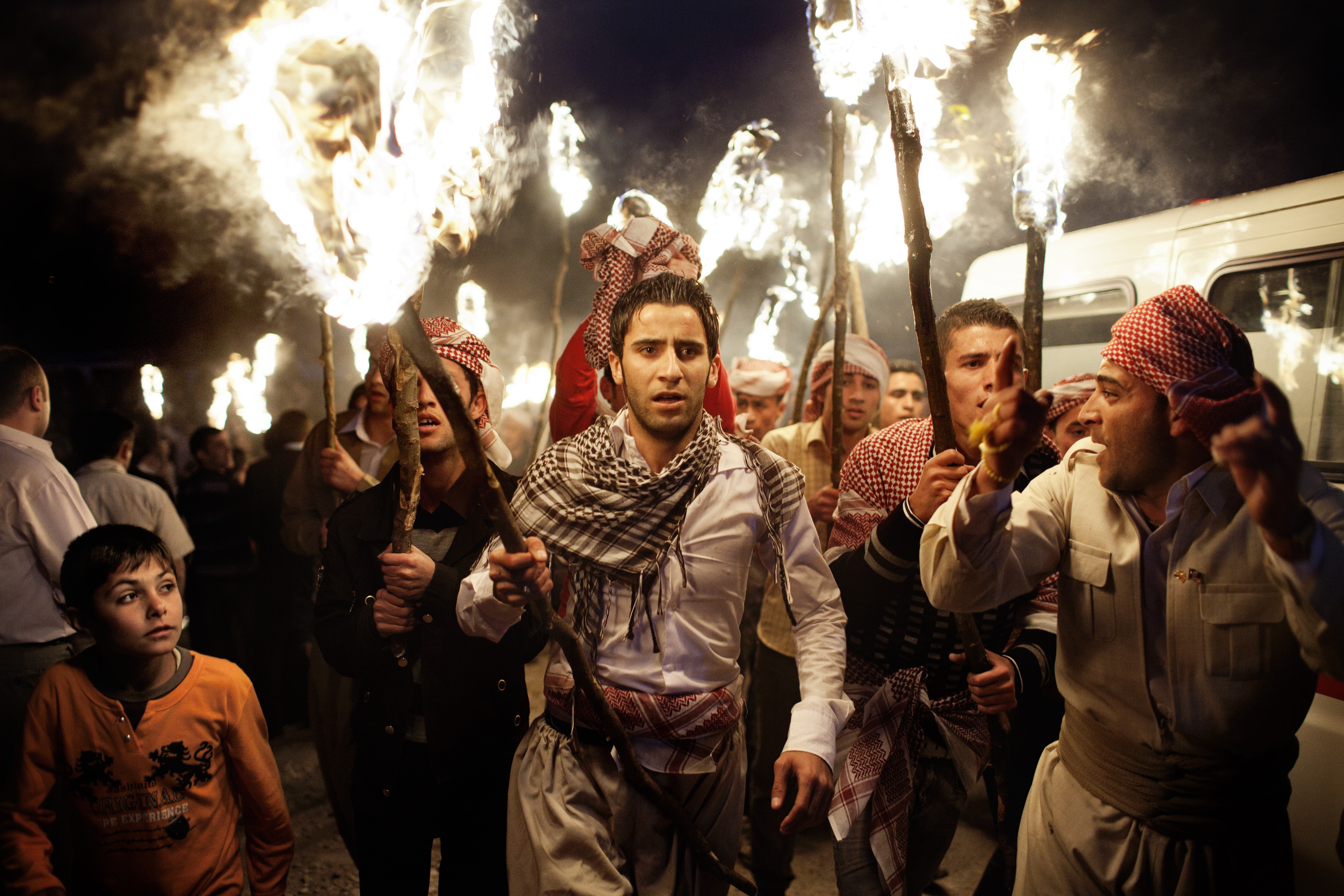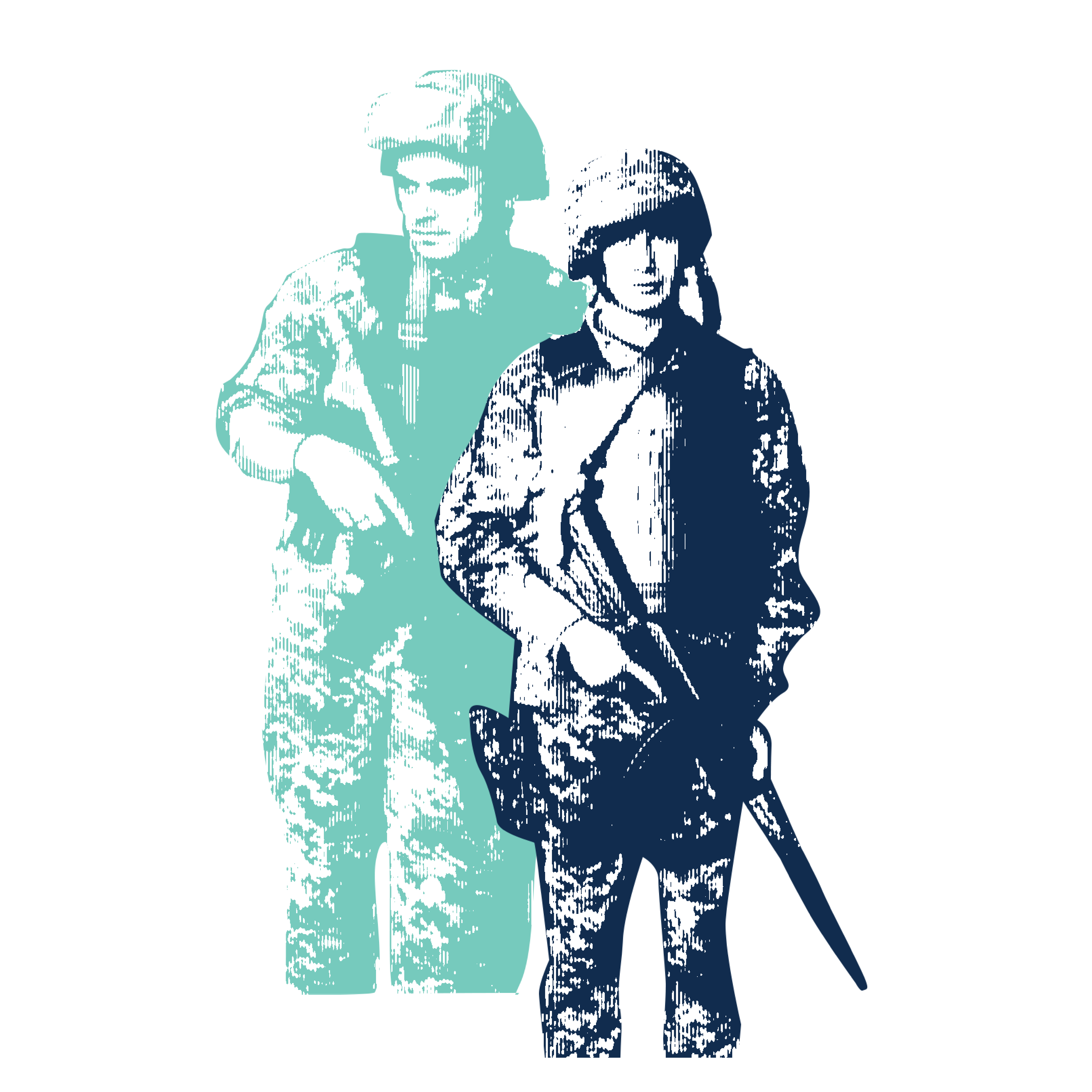
Last Tuesday, a few days after Sunni militants with the Islamic State of Iraq and the Levant (ISIL) routed the Kurdish peshmerga and pushed into northern Iraq, slaughtering and scattering Christians and Yazidis and prompting the United States to launch air strikes against the country for the first time since the end of the Iraq War in 2011, I emailed a friend in Kurdistan to see how he was doing. "Things are pretty normal," he replied. Some Christians and Yazidis—as well as Kurds from Erbil, the capital city, whose U.S. Consulate (and, presumably, oil companies) Barack Obama had vowed to protect—had sought refuge in Sulaymaniyah, the eastern city where he lives, but otherwise nothing had changed. A friend in Erbil told me the same thing. When I challenged him he grew annoyed. "It's up to you whether you believe it or not, but until now life here is pretty normal," he wrote. "Yes, some oil companies evacuated their staff," he continued casually, as if to say, so what?
Getting bad news about present-day Kurdistan can be like pulling teeth. Having lived through decades of persecution under Saddam Hussein, including the Al Anfal chemical weapons attacks towards the end of the Iran–Iraq War, which many consider genocide, most Kurds are loath to complain about lesser struggles. Today the region enjoys relative security, and, thanks to its vast oil reserves, the economy is booming. Erbil is a rash of skyscrapers, schools, and cultural institutions, all symbols of Kurdish optimism about the future. As Thomas Friedman put it in a column earlier this summer, "Kurdistan remains the unsung success story of the Iraq war . . . an island of decency in a still-roiling sea."
Such breathless optimism has become commonplace in the U.S. media in the years since the American invasion, and many Kurds are happy to corroborate the success-story narrative. Even those who feel left out of the economic boom or oppose the current government acknowledge the progress Kurdistan has made in recent years, usually with pride. Over the past few months, as the poorly organized Iraqi army wilted in the face of the ISIL onslaught, the peshmerga have been heralded in the Western press for their resilience, helping to evacuate the Yazidis encircled by ISIL fighters in the Sinjar mountain range and retaking territory that had fallen to the extremists. No doubt relieved to have found a stable U.S. ally in the region capable of effectively combating the ISIL advance, it is no surprise to see American liberals and conservatives alike lining up to praise the achievements of Kurdish society and calling on the U.S. government to support the Kurds' aspirations for independent statehood.
The reality of Iraqi Kurdistan, of course, is more complicated than these accounts let on. The Kurdish people face troubles that are not easily addressed by promises of oil wealth or what is often described as its "largely democratic" government. They have suffered decades of trauma, which did not end with Saddam's execution. Nor was the trauma inflicted by the central government alone. The violence meted out by the Kurdish authorities, often a result of political divisions in the region, is also underreported, in part because so many Kurds are reluctant to talk about it.
But the stories are being collected. In 2007, a small mental health clinic called the Trauma Rehabilitation and Training Center (TRTC) was founded in Sulaymaniyah, a collaboration among local doctors, John Hopkins University, and the Chicago-based NGO Heartland Alliance. Since then the center has treated over six hundred patients, mostly for PTSD and depression. The patients' case files read like a people's history of Iraq. Many of them would be familiar to U.S. veterans struggling with their own traumatic memories of war.
Outside the TRTC, housed in a modest villa down a side road in Sulaymaniyah, taxis kick dust onto small fruit stands and housewives diligently hose off their driveways, pushing muck into open sewers. A large, drab sign on the roof spells out the TRTC's name in Arabic, Kurdish, and English. Overgrown bushes scrape at the large windows, and a guard post beside the entrance serves as a reminder that security in Kurdistan should not be taken for granted. On June 19, the last time I visited, days after the Kurdish peshmerga had fought ISIL forces out of Kirkuk, an eerie calm had settled over Sulaymaniyah. The only indication that anything out of the ordinary had taken place were the long lines at gas stations. But the TRTC had already begun to hear from Iraqis traumatized by ISIL.
Inside the center, a handful of small offices—counseling, psychiatry—are marked by computer printouts that flutter in the air-conditioning. Office walls are painted periwinkle because "the color is calming," Dr. Ahmed Amin, the TRTC's director, told me. A water cooler burbles in the corner of a small waiting area where a case manager waits behind a small desk to greet visitors. Patients are screened before they come in; only those with high enough levels of anxiety and depression qualify for treatment, which is free. Once there, they fill out a questionnaire to identify what kind of help they need.
Dr. Amin, who was born in Sulaymaniyah in 1969, is tall and lanky, with a narrow, expressive face. Although he first trained to be a surgeon, he later studied health policy and conflict management, and it is these fields he draws on in his role at the TRTC, where his work consists mainly of fund-raising, research, and administrative duties.
In 2007, when the center was founded, mental health care in Iraq was practically nonexistent. In Kurdistan, whole villages were afflicted with PTSD. Some Kurds, who had never had access to treatment, were still struggling to cope with the memory of events that had taken place decades earlier. "We found in the entire country there were thirty psychiatrists," Dr. Amin said, when we met in his office. "Is it okay to go through all these traumatic events and only have thirty psychiatrists?"
"There was torture by the previous regime and by the current Iraqi regime," Dr. Amin said. "Torture by our Kurdish government, torture by Syrians, torture by the U.S." He took a sip of bitter Arabic coffee and grimaced, proclaiming it too strong. "The kind of torture, that's what we are in the process of analyzing," he said. "Beating all over the body is common. Beating on the bottom of the feet is not as common. Burning with electricity, that's common. Submerging the head in water, that's not common. Threatening with sexual abuse, common."
Elsewhere in Iraq, treatment is difficult to provide and to access. The TRTC has been helping to train doctors at a clinic in Baghdad, though lately, for security reasons, they meet only by Skype. In Kurdistan, however, the relative stability of the region and a returning diaspora community, many coming from areas of the world where mental health care is more mainstream, have provided the ideal circumstances for therapy to take root. There is also no shortage of potential patients—survivors of Al Anfal who are still searching for missing family members, dissidents traumatized by their time in Saddam's prisons, soldiers who fought alongside the Americans. And there are many who complain about abuses by the Kurdish government and their security forces. Among patients at the TRTC, Saddam's regime is the most common perpetrator of torture and trauma, Dr. Amin told me; the Kurdistan Regional Government (KRG) is the second.
*****
In the mid-1990s, after the United States and other nations established a protective no-fly zone over Kurdistan and Saddam lost his grip on the Kurds, a civil war broke out between the region's two major political parties. The west, which includes Erbil, was controlled by the Kurdistan Democratic Party (KDP), led by the president of the KRG, Massoud Barzani. In the east, with Sulaymaniyah at its center, was Jalal Talabani's Patriotic Union of Kurdistan (until recently, Talabani was also the president of Iraq). Both men were considered by Kurds to be revolutionary leaders and protectors of Kurdistan. The bloody and protracted civil war threatened to undermine the Kurdish nationalism that had nourished Kurds throughout the worst of the Saddam years.
Many Kurds, even the peshmerga, who proudly flaunt their battlefield experience, are reticent about the civil war, ashamed of the role they played, or still fearful of repercussions. The center sees patients who say they have been detained and tortured by the security forces of both parties. For a region whose dream of independence is underwritten by security and optimism, these cases are naturally hard to face. "Kurds knew that to fight with a dictatorship, that was an honor," Dr. Amin said. "But we still call [the civil war] killing brothers. Friends fighting one another. Families fighting one another. We have always wanted to erase this from our minds."
Dr. Amin showed me case files, some very recent, describing torture by Kurdish authorities. In 2003, case no. 454 was tortured by Kurdish security in Sulaymaniyah because they suspected he had ties to a Kurdish Islamic party. In 1994, case no. 449 was held and tortured at separate times by both the Islamic party and the KDP, twice in 1994, then in 1997, and again in 2003. Case no. 461 reported being raped. Each was diagnosed with PTSD or depression.
A therapist I spoke with at the center saw a patient who had been arrested at a checkpoint; it was at these checkpoints during the civil war where suspected members of a rival party were routinely detained and often tortured. Even during peacetime, Kurdistan deploys peshmerga to maintain its hard-fought security, and the region is crosshatched with checkpoints.
"In 1997 or 1998, during the civil war," the therapist told me, the patient "was arrested by one of the parties. It was only for one day, but during that period people threatened him with death. People had to intervene to pull him out of jail." In the years following his detention, the patient was unable to go through checkpoints alone. "Checkpoints are too common," the therapist told me. "You have to pass through them."
To help the patient, the therapist used the Common Elements Treatment Approach (CETA), a treatment model designed for countries with limited mental health resources, which the TRTC counselors are still testing in a local context. Step one simply encourages participation in therapy; step two explains the CETA technique. Later steps ask that patients "get active" or "relax," and ultimately, for patients dealing with trauma, the therapy directly addresses what the CETA manual calls "difficult memories." They write down the patient's story, focusing on what the therapist called "hot spots," or moments of profound trauma.
"For example, when two people came to torture him," the therapist said. "We return to this point and start to talk about the details. Maybe there was rape, maybe he was tortured severely. For two or three or four sessions we work on different memories. Then the patient takes his story home to read by himself. Gradually, he can deal with the story. After that, we work on the thoughts related to the story, and then the patient might be ready to be exposed to the place.
"When the client succeeds in passing through [a checkpoint], they feel like a new person," the therapist told me. "They call me, laughing."
*****
June 26 is the U.N. International Day in Support of Victims of Torture, a day when the TRTC might have been expected to advertise its services. But with ISIL already on Kurdistan's borders, and tensions high after local elections, the center had to keep a low profile. These kinds of challenges were nothing new for the center, whose advertising campaign reflects their effort to appear neutral with regard to Kurdish political parties—a lofty goal in a region so dominated by alliances.
"Our TV channels are affiliated with different parties," Dr. Amin told me. Outreach is a balancing act. "If I go on PUK TV, then the same night I make sure to go on the other TV channels." Seated, he pantomimed a sprint, hooking his arms at his sides and swinging them. "We are neutral," he said. "But it's very difficult." A poster hanging in the hallway outside his office showed a white candle floating above a fluffy cloud. The image was designed to represent the center, but they were forced to retire it when a new political party began using a similar candle as their logo. "We had the symbol two years before them!" Dr. Amin exclaimed. The poster hangs in the hallway like a relic.
This year, the TRTC did minimal advertising in the city center. It was too risky. Iraq was preoccupied, and, anyway, there was no shortage of patients. But the center was planning to hang posters in the Red Museum, a Saddam-era detention and torture center that is now one of Sulaymaniyah's main tourist attractions. It would be a statement about the center's belief that real progress in Kurdistan comes from confronting the traumas of the past and the realities of the present, not ignoring them. It was a modest campaign, but powerful nonetheless. The posters at the Red Museum would serve "as a symbol," Dr. Amin said. "This was a torture center, and now there's a torture treatment center. And this is a museum, with a cafeteria."







